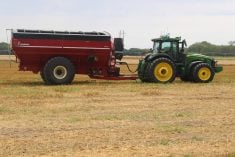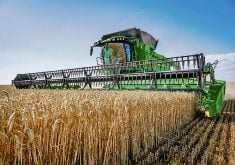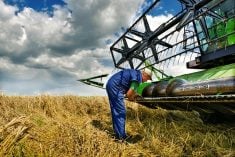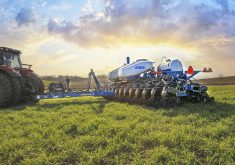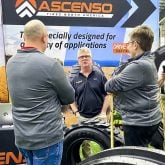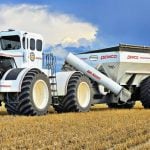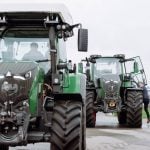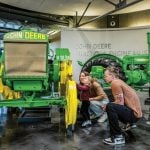Glacier FarmMedia – As chair of the board, chief executive officer and president of AGCO, Eric Hansotia knows a few things about agricultural consolidation.
The new chief has worked in the machinery world for about 30 years and spent a good deal of that time in technology development and delivery.
He says AGCO’s approach to smart machines is a good match for his company’s future.
Read Also
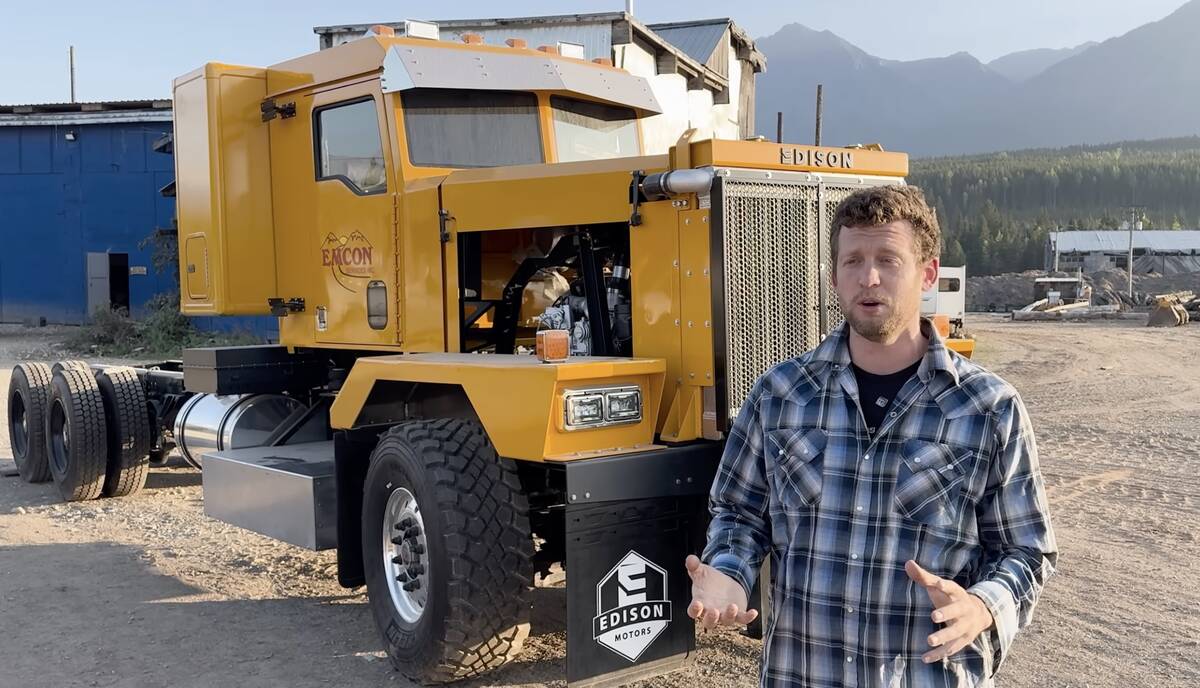
Gap in emissions regs hamstrings Canadian hybrid truck manufacturer
In case you haven’t heard of it, British Columbia-based Edison Motors is a start-up heavy truck manufacturer. Being a startup…
Hansotia grew up working on a Wisconsin dairy farm and says that background helps him remain connected with farmers.
Since taking the reins at one of the world’s largest farm equipment companies at the beginning of the year, he has been steering the company in one direction.
“We want to be the most farmer-focused in the industry,” Hansotia said in an interview.
Producer demands for technology tools have been shaping the company’s research and development for years, but in doing so it hasn’t given up ground on the high-capacity side of the ledger, with big horsepower, high-throughput gear.
He said the company is also examining capacity and how it can make better use of inputs and improve animal-handling tools. As well, AGCO wants to keep a focus on how to capture farm data and apply it to practical field and barn operations.
Sustainability can be a loaded term in agriculture, he added. From a farmer’s perspective, it can be financial or in the form of helping to deliver a more balanced lifestyle. From a government or larger society perspective, it can be based on carbon balance sheets or animal welfare.
“We recognize that. We have been working on precision agriculture for a number of years, helping the farmer make better use of the inputs and optimize the yield or grow the yield based on the same input levels,” he said.
“Carbon sequestration, it’s a big term. What we are talking about is using photosynthesis to take that carbon up in the air and getting it trapped down in the soil. Improving soil health. With higher soil health, giving farmers better organic matter and a more stable soil that provides stability from year to year.”
Hansotia said the field tools AGCO has been building are based on adding sensors and data management that will let producers manage the way their machinery interacts with the soil and produces more opportunities for better profit margins.
“Measure, optimize and report,” he said.
“We have a grain business (related to grain handling). But we also have a protein production business. And everything we are building for precision agriculture in the field, we are taking to our protein business and helping protein producers,” said Hansotia.
“As people show more and more care for animal welfare, we want to provide solutions for farmers. Cage-free and those sorts of solutions. Maintain the productivity and the sustainability at the same time. Where those intersect, that is where we are building new tools,” he said.
See and Spray herbicide application is an example of the company’s smart machines.
AGCO is working with Bosch’s designs for high throughput recognition of weeds on bare soils, for burn off or inter-row spraying. It merged that with BASF’s plant recognition to identify weeds among a growing crop for post-emergent control.
Finding an unwanted plant at speed in the field is one thing. Hitting it with a targeted application is another.
“Raven provides the pulse width modulation, high precision nozzles to reach the weed with the right application. At AGCO we bring all that together with our user interface and Liquid Logic system and we build that whole machine that goes to the field and uses less chemical and is a smart farm machine,” he says.
Once that sprayer reaches the market, it will join the other equipment AGCO has deemed “smart machines” such as the self-adjusting Ideal combine, the Momentum planter and many of the company’s tractors.
Those are Fendt-branded machines and Hansotia says that business will continue to grow.
Fendt was once a brand best known as a premium product line in Europe. With the addition of the Ideal combine and the new Momentum planter, along with the high-horsepower, fixed frame tractors — which also have flown the Challenger flag — it is expanding in North America.
Hansotia said different customer groups must be served in various parts of the world.
“There are some very large farmers that are very demanding of their equipment and looking for the very best performance from their investments, and some smaller and mid-sized who use the latest in technology and see value. For them the Fendt (lineup) is what they are seeking,” he said.
Growth of the Fendt brand is also limited by the company’s dealer network because not all AGCO representatives have the right to represent Fendt.
“They have to be able to support their farmers to a level that meets the Fendt requirements for service to the farmer.”
AGCO has made significant investments in engineering, relative to the company’s size, and that supports its current Fendt smart machinery plan, Hansotia said.
“We had the biggest increase in our engineering budget in our history last year (2020). From US$350 million to $400 million. At the same time, we have been acquiring some smaller companies, when we see they bring technologies and ideas that we can use to meet farmers’ needs, companies such as 151 Research in Winnipeg and a few years ago, Precision Planting.”
“Look for more smart tools from AGCO. They are coming.”
This article was originally published at The Western Producer.



